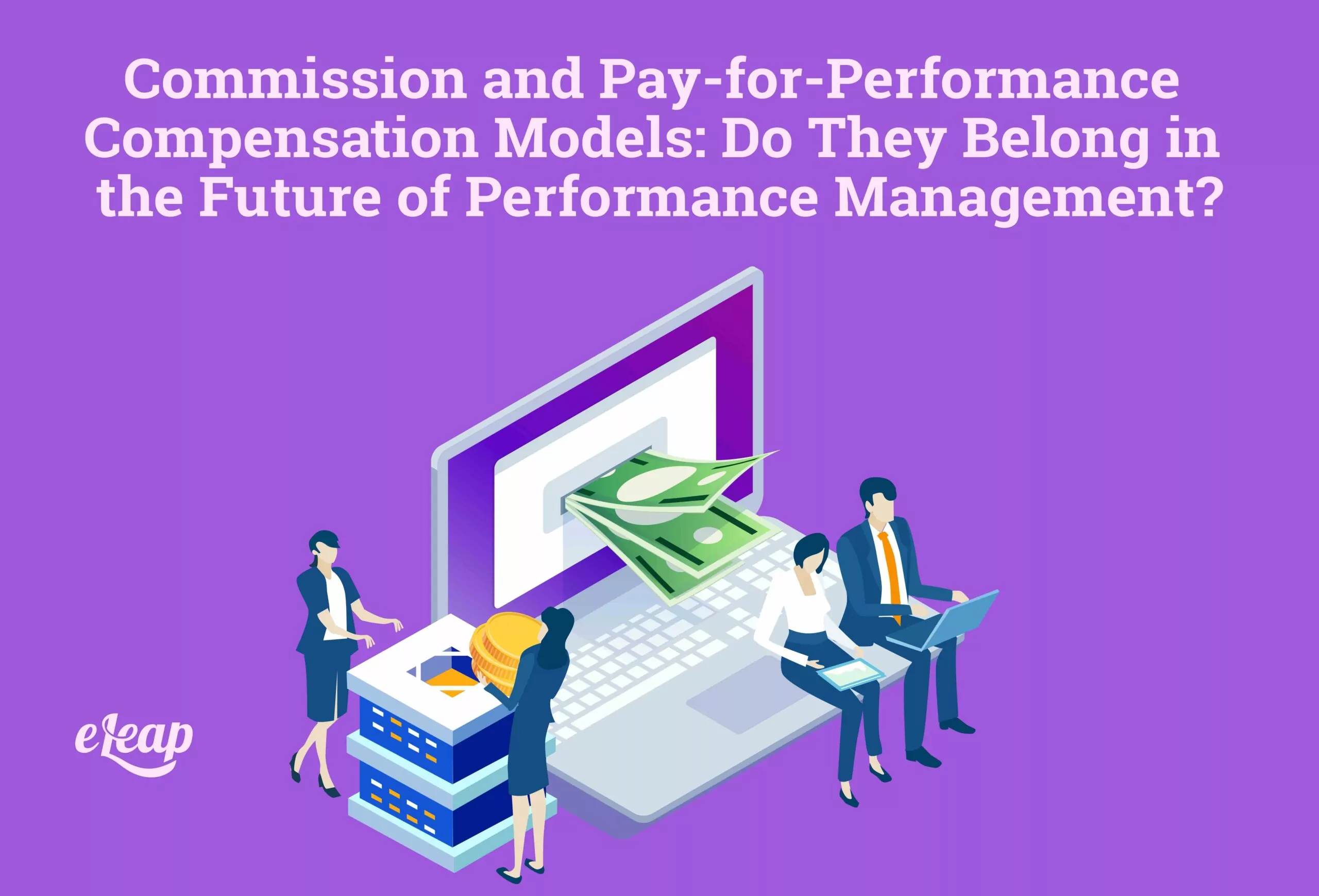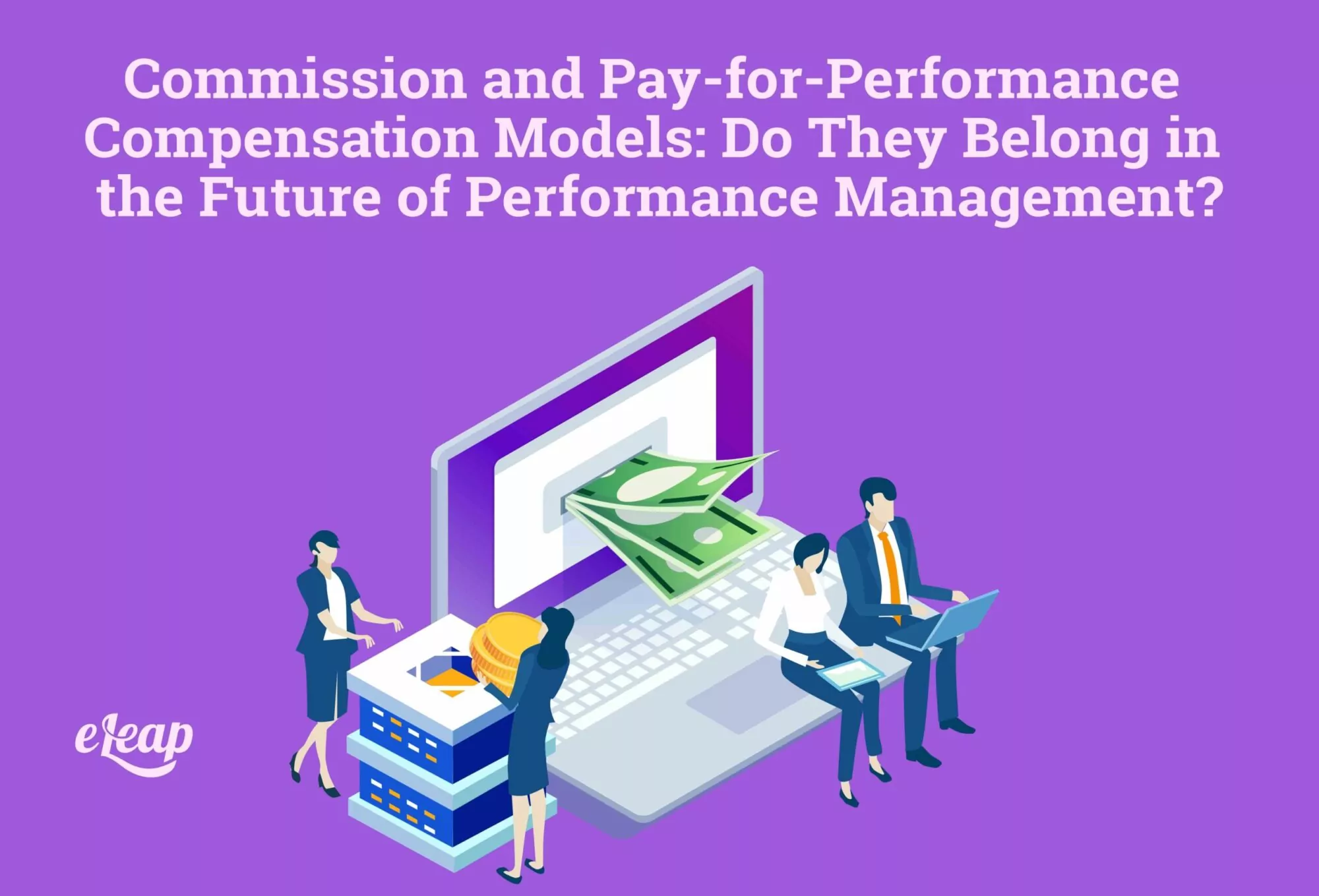Commission and Pay-for-Performance Compensation Models: Do They Belong in the Future of Performance Management?

For years, sales positions have often been offered with a commission and/or bonus structure—the more you sell, the more you can earn. It’s a good enough incentive for many salespeople to work harder and acquire more business on behalf of the organization. However, in today’s post-COVID economy where everyone is still feeling the effects of the Great Resignation, is there still a place for this type of “forced” performance? Explore how eLeaP’s Performance Management Platform can simplify evaluations, boost productivity, and drive measurable results.
Commission and performance pay models can still be effective. However, they have to be re-envisioned, redesigned and restructured in a way that encourages better performance but doesn’t automatically count against people who are struggling or who may have a different approach.

A Flawed Design from the Start
The problem with most pay-for-performance structures is that their basic design is flawed. These systems are often unintentionally creating a single “worker” persona that everyone is expected to live up to. The performance pay models essentially end up removing individuality and almost penalizing those who don’t fit into the exact box set before them. While that was effective for business in the past—the concept of “you become one of us”—today, fewer employees are willing to follow that path.
They want to be recognized and valued as an individual contributor, and they want a fair compensation model that reflects that. Even if commission or performance pay is involved, it needs to be a structure that’s designed to give every individual the chance to excel in their roles, not just create a battle for the bottom dollar that goes against everything modern workplace culture demands.
More Than Numbers
If the focus needs to be on something other than numbers, how can a performance pay structure even be thought of? Well, to begin with, it’s not about getting rid of the numbers—those are necessary and have their place. It’s about shifting the focus so that people are more than their metrics, and they have more opportunities for growth and upskilling to help both themselves and the organization. When creating strategies based on performance pay can be done effectively, but it must be about something other than just hitting the right numbers.
Human nature is not finite or able to be quantified. It’s also impossible to predict and quite fickle at times. Therefore, approaching the excitement of unlimited earning potential needs to take an approach that appeals to a wider employee audience and focuses on more than just “you must sell ‘X’ amount” or some other generic commission model.
Get creative. Feel free to include your employees and their opinions in the process. After all, people today want a say in their positions, their pay, and all aspects of their careers. Take advantage of that to help you design the most effective performance pay structure.
It Starts with Planning
When implementing or changing a commission or performance pay structure, planning is essential. Take the employee feedback that has been gathered and the ideas of organizational leaders and combine them with the existing structure to re-think and rearrange the way that it all works. Each organization will have its own considerations in creating a pay-for-performance structure, which will easily begin to show itself when the plans are implemented properly.
Consider what the “pay” is—some companies still go with actual money, while others offer incentives like extra time off or special perks as compensation for meeting performance metrics. Take the time to cover all aspects of the performance pay model so that you can answer all employee questions and concerns, and make sure that the model you create is aligned with your business goals and initiatives.
Incentives Can Lead to Increased Engagement
When it is done correctly, having incentives in place will increase employee engagement more than organizations anticipate. It can’t be a fear-driven incentive, of course. It has to be a positive plan that’s designed to reward performance, especially the performance of those who are going above and beyond the call of duty regularly. When people are given something to work for, they tend to perform better. Plus, when it’s done well, the incentive plan will engage employees automatically, creating a space where everyone wants to compete to do better.
Engagement is the magic word these days. If employees aren’t engaged, they aren’t really investing their whole capabilities into the job, and they’re likely only doing what it takes to get by. Not only that, but the organizations that create incentive plans and performance-based programs are usually going to see employees taking the initiative to engage in a little healthy competition with their peers.
It Doesn’t Always Have to Be Monetary
Another thing that often gets overlooked with pay-for-performance structures is the fact that it’s not always about money. Granted, most people work to get paid so that they have money to live and enjoy life. That’s where financial incentives have always been effective—people need and want money, and if they’re given more to do better, of course, they’re going to do better. Unfortunately, not everyone is money-driven and that won’t always do the trick.
The best organizations are those that consider their employees and what they respond best to and then create performance plans based on that insight. People could be rewarded with extra time off, a free lunch, or any other incentive that you think would get them working harder for the organization. As long as it’s valuable or desired by people, it’s a great way to incentivize performance in the workplace.
It’s About Balance
More than anything, it’s not about getting rid of performance pay structures but modifying them and ensuring that they’re ready for the future of business. Taking the time to see where previous plans failed and how other companies are setting up a new performance structure can help organizations make the right moves to get their new plan in place. Be sure to get feedback and consider just what employees are willing to work for and this type of structure can still be incredibly successful. The eLeaP continuous performance management system provides organizations with powerful options to attract and retain high-caliber team members.